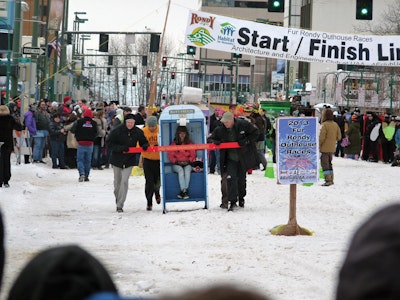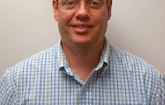
Interested in Education/Training?
Get Education/Training articles, news and videos right in your inbox! Sign up now.
Education/Training + Get AlertsThe state marine animal is a whale. Texas would fit within its boundaries – twice. There are 39 mountain ranges, 3 million lakes and 5,400 islands (2,700 with names). Some locations have average winter temperatures around 3 below zero and snowfall is often measured in feet – the annual snowfall record for one location is 81 feet.
Life is different in Alaska. And so is the way onsite systems are installed and monitored.
About 25 percent of the state’s homes have septic systems. There are about 125 certified onsite system installers, but no professional trade association for them. A crew of just five onsite wastewater inspectors – each with a territory a little larger than Oregon – monitor new and replacement installs.
The manager of the Engineering Support and Plan Review Section for the Alaska Department of Environmental Conservation is Gene McCabe. He and his wife Wendy grew to love the Land of the Midnight Sun when he was based there for the Air Force, and moved back there after he retired from the military.
Installer: What is your biggest issue for onsite systems?
McCabe: We’re continuously running into undocumented or under-documented installations. That causes delays for home buyers and sellers since lenders want to see documentation for the onsite systems. It also makes it difficult to help homeowners if their system fails and they don’t know what has been installed.
Installer: Does Alaska have a Certified Installer program?
McCabe: This spring we trained and tested more than 125 installers. Contractors get training from our Water Division and take a certification exam that allows them to install conventional onsite systems for single-family homes, duplexes and small commercial facilities of 500 gallons per day or less of domestic waste. The certification is valid for two years and requires a refresher course and exam to renew.
Advanced systems must be engineered, submitted for plan approval, and the engineer must certify the installation was done correctly. This year, some of our experienced installers brought up the idea of a second level of certification. We are looking into certification for advanced systems. We are definitely seeing growth and more public interest in the advanced systems, especially where traditional soil absorption systems just don’t work.
Installer: With so much area and so few people, do you inspect every onsite system installation?
McCabe: We’re really happy with our certified installers. The field office will inspect systems as available, but 100 percent inspection is not required. Installers self-certify and submit as-built documentation within 90 days. Installers must notify the closest division office at least 24 hours prior to installation, but if they can notify us further ahead, the better we can schedule an inspection. If they get two complete inspections in a season, they are exempt from having to take the written exam that year.
Installer: What challenges does the unique Alaskan environment pose to installation?
McCabe: Cold temperatures in the range of -40 definitely play a large role. We have areas where the ground is so rocky or the water table is so high that conventional onsite systems simply do not work. We have vast areas of permafrost where the ground is frozen all year. Many of our towns and villages are not on a road, so equipment and materials must be brought in on barges or flown in. [About 90 percent of the state is not served by a road. There are only 13 state roads, but there are 600 airports and more than 3,000 airstrips.]
Installer: So out of necessity, you must still have a lot of outhouses.
McCabe: They are an allowed waste treatment system because they are sometimes the only system available. We don’t regulate outhouses, but we do publish guidance on setback distances from surface water, hole depths to protect groundwater, and restrict them only to human waste; you can’t discharge graywater into them.
Installer: What are you working on for installers in Alaska?
McCabe: Our biggest project by far is the complete revision of our Certified Installers Manual to make it field friendly and a resource to turn to. We got feedback this year from many of our initial certification students that they would like the course to be more than one day. The course is truly a lot to take in and then take an exam all in one day. We’re going to see if we can break the class down to two days. And we’re investigating accepting continuing education credits from other professional training events toward recertification credit.
Installer: What is the program’s biggest accomplishment of the last few years?
McCabe: I’m really happy with our installer database and the amount of detail we have on the certified installer program. It’s probably the strongest point of our program that we have an accurate database on everyone’s contracting license, certifications, exam results and inspection reports. Our system is really solid and is our biggest accomplishment in the last five years. Before that, it was highly regionalized and there was no central point for having all that data.
As we get information from installers, we put it into the statewide Septic Tracking System online database. It has septic installation data for every single-family home. The public can see it, especially those who don’t know what they have for a system or people who are trying to buy or sell homes. There is no state requirement for an inspection before sale, but many lenders are becoming much more savvy about onsite systems and requiring that they have been approved. Alaska has a lot of history around septics and we do run across a fair amount of homes that have systems installed but there is no documentation, so lenders will require an engineer to conduct adequacy tests.
Installer: Are there areas of Alaska that will never have sewer or septic?
McCabe: There are small, remote villages where it just doesn’t make sense. We definitely have places without flushing toilets or running water that have designated honey bucket [typically a 5-gallon bucket and liner] dump sites as their primary waste treatment. Alaska has several agencies that help villages with sanitation, especially native villages where they still practice subsistence living, not because of poverty but because it is their way of life. It’s a combination of providing a technical solution the village can support and education at the same time.
Installer: It is certainly a different way of life, why did you choose to live there?
McCabe: Nobody says “I don’t know where to live, let’s try Alaska.” We’ve been here four years. I was stationed here for three years and we decided that we wanted to live here after I retired from active duty. It worked out that my experience in managing environmental issues in the Air Force lined up with what DEC was looking for. It’s the lifestyle here, and the natural beauty. You can live in a city of 300,000 people like Anchorage, drive an hour and be by yourself. The ability to do so many outdoor activities is almost overwhelming. From snow machining, ice fishing and cross country skiing in winter, to spring hunting, summer fishing; at times it’s almost exhausting. But it feels like a waste to sit inside.







